It's hard to believe it's been a year since the last one of these epic posts. But it's time once more to report on the goings-on at the US Amateur Team East chess tournament. I don't play a lot of tournament chess anymore, but I always like to come out of retirement for this one. With something like 1500 chessplayers on hand, it's one of the biggest and most enjoyable tournaments of the year.
Let me remind you how this works: You play as part of a team of four. That means that in each round you play four individual games of chess, with no communication among teammates. For each game your team wins, you get one point. A draw counts for half a point, while a loss gets you nothing. When all four games are complete, the team with the most points wins. As far as the tournament standings are concerned, only your team score matters. Whether your team wins 4-0, or 2.5-1.5 is irrelevant.
One other thing: A team can actually consist of five players, since you are permitted one alternate. You know, maybe your second board has a wedding to go to on Sunday, and you need someone to fill in for him. Now, I've been playing with the same bunch of guys for a couple of decades now. When we started, I was too young to drive. Get the idea? This year, unusually, all five of us wanted to play all three days. No problem! We just worked out a schedule where each of us took a break during one of the rounds. It worked out rather well, I think. Let's be honest, for us this is as much a social event as it is a chess competition. It was nice to have one round off to browse properly in the bookstore, to follow some of the bigshot games, that sort of thing.
So here we go! Me and my homies got together for one more, inevitably forlorn, shot at the title.
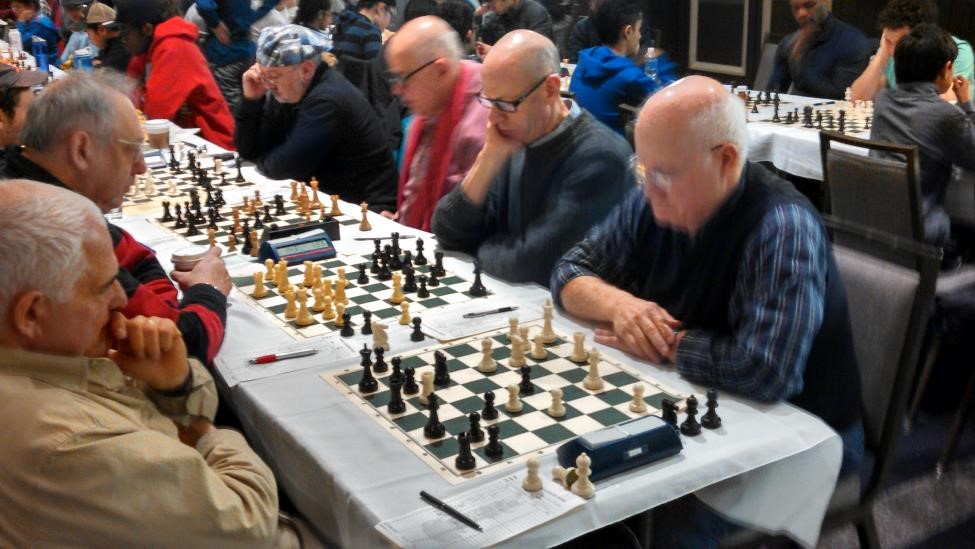
This was taken at the start of Round Five, the infamous Monday morning game, where I was the one taking the break. Closest to the camera is Curt Kimbler, who in addition to being a good chessplayer and an all-around great guy, is also an accomplished fisherman. He was sporting a rating of 1730. On board two we have Doug Proll, sporting a rating of 1616. Doug is a statistician for J. P. Morgan. Board three is our spiritual leader Ned Walthall, rated 1362. Ned is an accomplished photographer, but he is also the one who got us all together in the late eighties by founding the Princeton Chess Club. And on Board Four we have Brian Cige, a lawyer in private practice. He's rated 1262.
And me? I was rated 1960. At the start of the tournament! Let's see what happened.
Round One saw us paired up, meaning we played a higher-rated team. We were, however, in the main ballroom with the big boys:
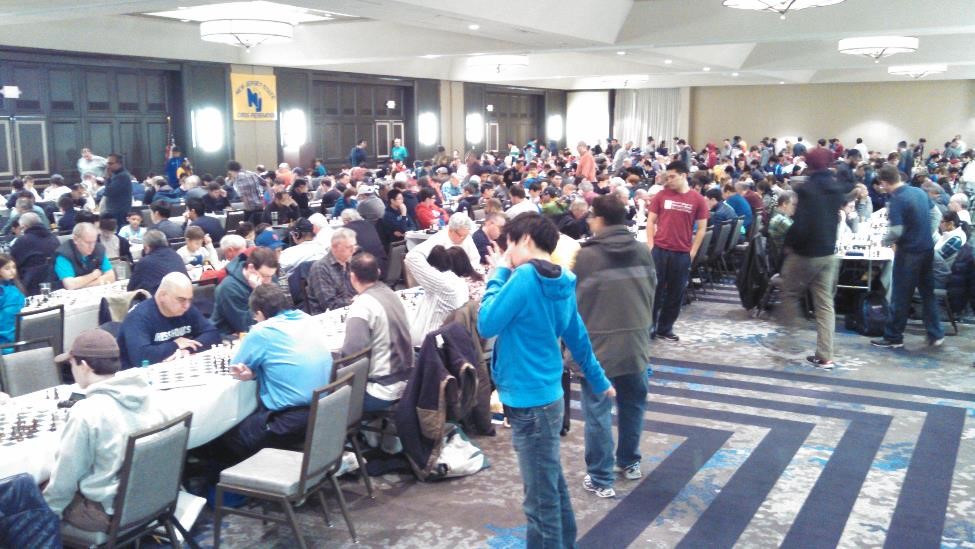
Things got off to an auspicious start for me when I beat an expert! I was very pleased with myself, right up until I went over the game with the computer. Here's what happened:
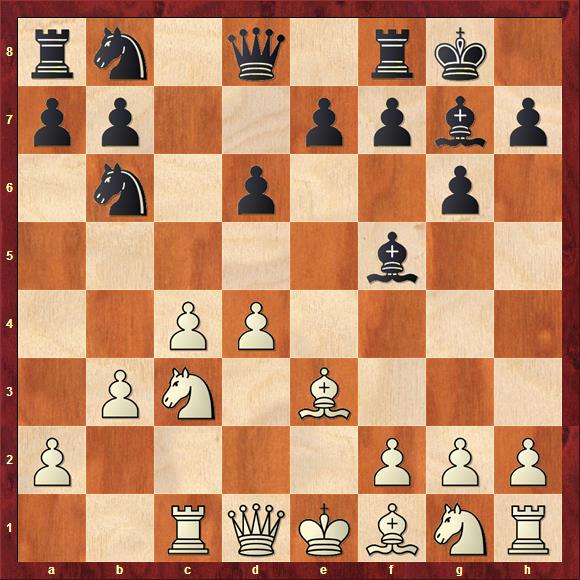
We pick up the action nine moves in. I was white. This position came out of an Alekhine's Defense. The Voronezh Variation, to be exact. Black has just moved his bishop to f5, which is unusual but not bad. Usually black wants to play the f5 pawn break, and the bishop currently gets in the way of that.
The game's first big moment came after my fifteenth move.
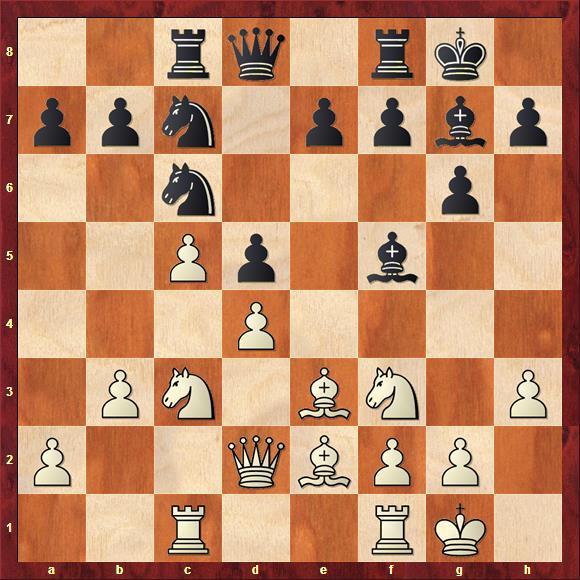
I had just moved my pawn to h3. Up to this point we had both been making normal developing moves. Black now has a big choice to make. Plainly, he wants to play for the e5 break. But this has to be timed just right, when his pieces are optimally placed. This suggests a bit more preparation is in order, say with a move like Re8 and maybe f6. But my opponent got impatient and played 15. ... e5 immediately.
This is a mistake! The computer evaluation suddenly shoots up in white's favor. White is actually well-placed to meet this break, and black has to worry about his newly isolated d-pawn.
There now occurs a strange double blunder. Taking the e-pawn seems called for, but should I use my pawn or my knight. I chose 16. Nxe5, which is a blunder. If my opponent had noticed the fork with 16. ... Bxe5 17. dxe5 d4! we could have gone for an early lunch. Happily, he missed it too! Play continued 16. ... Nxe5 17. dxe5 Bxe5 and the game was back to its normal course.
We then had 18. Bd4 Re8 19. Bf3, leading to this position:
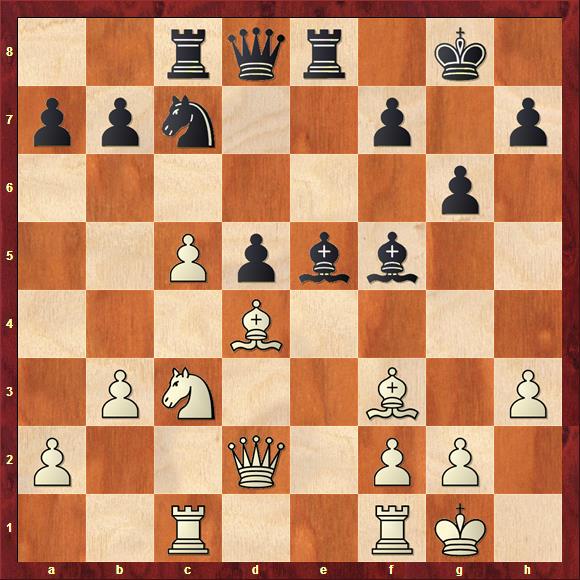
Now I figured we would trade bishops on d4, followed by a sequence in which I picked up his d-pawn while he got my c-pawn. The result would be a drawish endgame. But my opponent was feeling combative and played 19. ... Qf6, and play continued with 20. Rfd1 Rcd8
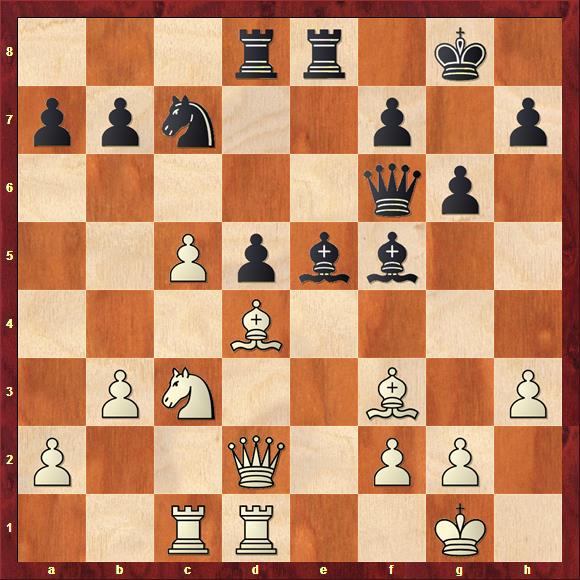
Seems normal enough. But my rook move was actually another blunder! It's a classic case of the wrong rook. If instead of 20. ... Rcd8 my opponent had noticed 20... Bxd4 21. Qxd4 Re1+, we would have had that early lunch after all. I can't take his rook, since that leaves my queen hanging on d4. So play would have continued 22. Kh2 Qxd4 23. Rxd4 Rxc1, winning a rook and the game.
But my opponent missed it too! It's kind of incredible. I grant you, neither of us was a master-class player. But we do have some chess experience, and it's not as though we were blitzing off our moves. And yet we both managed, on two occasions, to miss simple tactics. Chess is hard!
Play continued 21. Bxe5 Rxe5 22. Re1 Be4 23. Bxe4 dxe4 24. Qc2 Rde8:
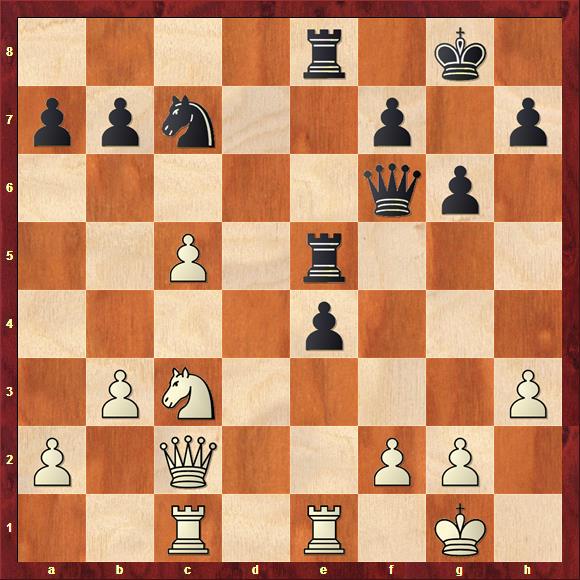
Black is about to lose his e-pawn, but he should still be OK. He has active pieces and white's c-pawn is very vulnerable. But now my opponent got very careless. We had 25. Rxe4 Rxe4 26. Nxe4 Qd4 27. Nd6, and black either accepts the loss of a second pawn on b7, or he plays the repugnant 27. ... Rb8. Black chose to ditch the second pawn, but he just doesn't have enough activity to justify the loss.
Over the next few moves I was able to consolidate my material advantage.
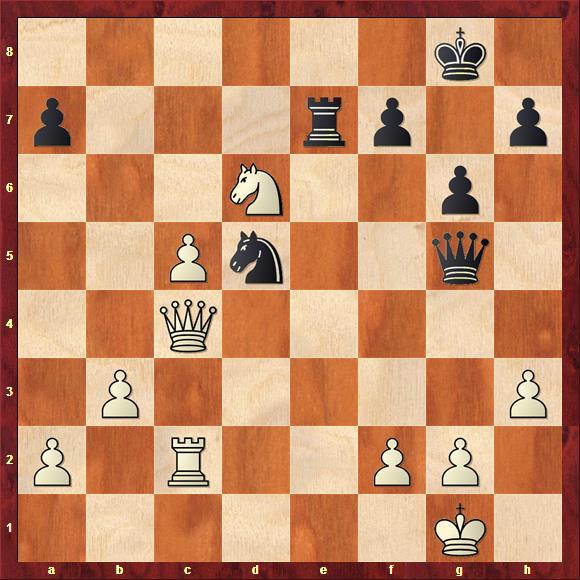
Black has just moved his queen from d2 to g5. Now it's white to play and win. Since I don't always miss tactics, I found 32. Ne4. Black has to move his queen, but it hardly matters where. He chose 32. ... Qf5, and I immediately replied with 33. Qxd5 The point is that black cannot take my queen because of the knight fork on f6. So his only option is 33. ... Qxe4 34. Qxe4 Rxe4

And now white just has an immediate win. I pushed my pawn to c7. Black had to block it with his rook. The trouble with this is revealed in the position after black's 39th move:
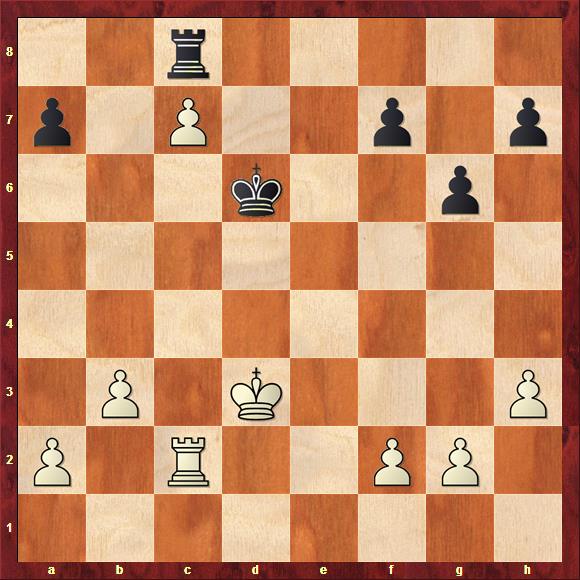
Now the problem is clear. Sure, black can just take the pawn on c7. But then I would trade the rooks, leaving a trivially won pawn endgame. And that's the point. The black rook can never move from c8. The instant it does I shall promote, thereby forcing a rook trade and a won pawn endgame.
So black can do nothing while he gradually runs out of moves. He resigned a few moves later. Whew! Always nice to start with a win, even if the buzzkill computer points out what a fish you are.
The old Princeton Chess Club was well represented. Here are some more old friends:
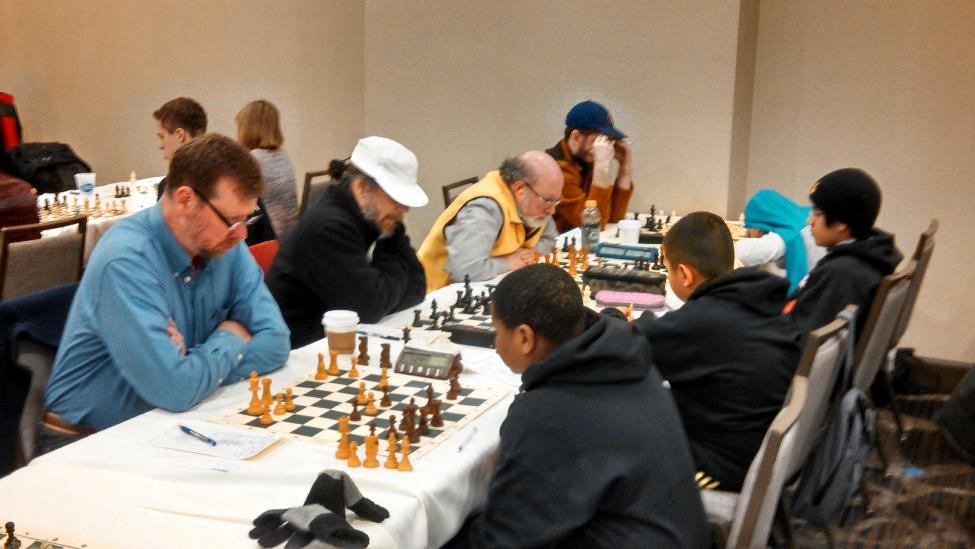
That's Matt Allman on Board Four, closest to the camera. Next to him is Joel Heinrich, and next to him is Jon Edwards. Jon is a top-level correspondence chessplayer, and he is poised to receive his grandmaster title in that form of chess. He's a written a number of excellent chess books, such as this one. Then we have Derrick Higgins on Board One. Derrick and Joel now live in Illinois and Wisconsin respectively, but chessplayers come out of the woodwork for the USATE.
Anyway, back to the chess. Sadly, my homies got skunked on the other three boards, meaning the team lost the match despite my win on first board. Oh well.
That meant we were bounced out of the main ballroom into one of the side rooms:
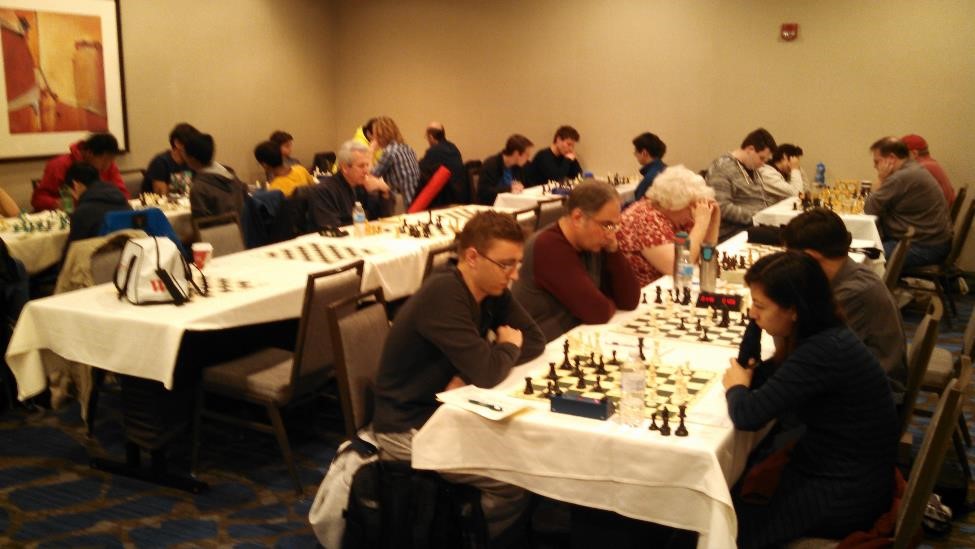
We had a more reasonable pairing this time around, but my opponent was rated 2100+. Now, I ask you, where is the justice in that?
It ended up being quite an exciting game. I was black this time and played the Orthodox Queen's Gambit Declined. The first interesting moment came fifteen moves in. White had just moved his bishop from g5 to h4.

Black can now win a pawn with 15. ... b4. After white moves his attacked knight I just pick off the pawn e4. Tempting! But I talked myself out of it. It looked to me like white will get quite a lot of activity based on rook invasions on c7 and knight invasions on b6, and I didn't want to deal with that. I didn't see anything immediately decisive, but I've lost a lot of games by getting overly materialistic against strong players. In this case the computer agreed with my assessment, giving white a small advantage after the pawn grab.
Besides, I didn't think I needed anything extravagant like that. I felt like I had played the opening very reasonably, and that my opponent had been downright passive to this point.
The next exciting moment came as white was about to play his 22nd move.
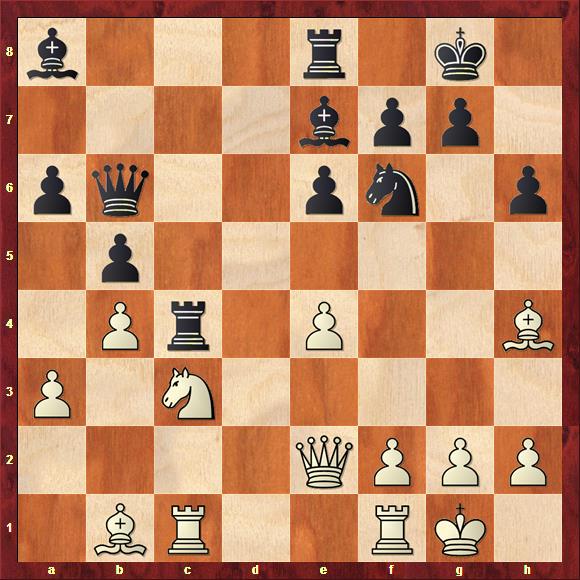
My opponent found 22. Na4. Objectively it's nothing special, but it sure caught me off guard. If I take the knight with my pawn then my rook on c4 is hanging, so that's not an option. But then I have to move my queen, after which exchanges on c4 will leave me with a weak pawn. Bummer!
But this is really no big deal, and I should have just calmed down and started calculating. Instead I played very carelessly. Here's the position with black about to play his twenty-fifth move.
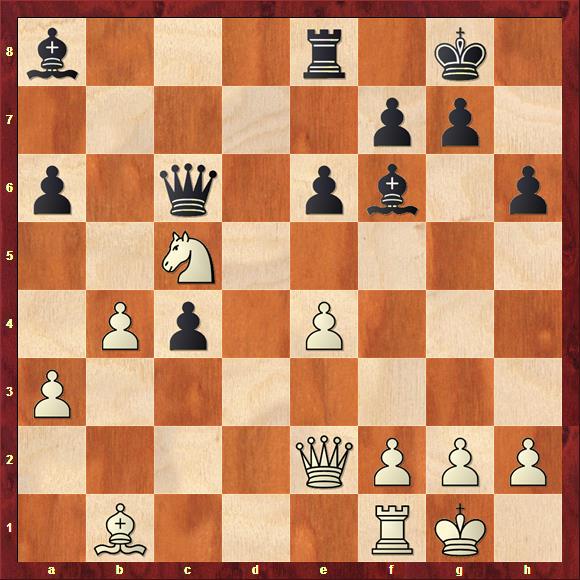
Here I should just jettison the c-pawn. While white is taking it I will have time to grab the d-file with Rd8 and Qd6, after which black's activity really ought to be sufficient compensation. Instead I played the time-wasting 25. ... Qb5, missing that after 26. Ba2 c3 27. Bc4 white just wins a pawn.
And still this is no big deal, since black really does have a lot of activity as compensation. But I was convinced that I had blown it at this point, and that made me try to force the issue. Instead of just sitting on my bind, I felt like I needed to get the pawn back immediately. That led to situations like this:
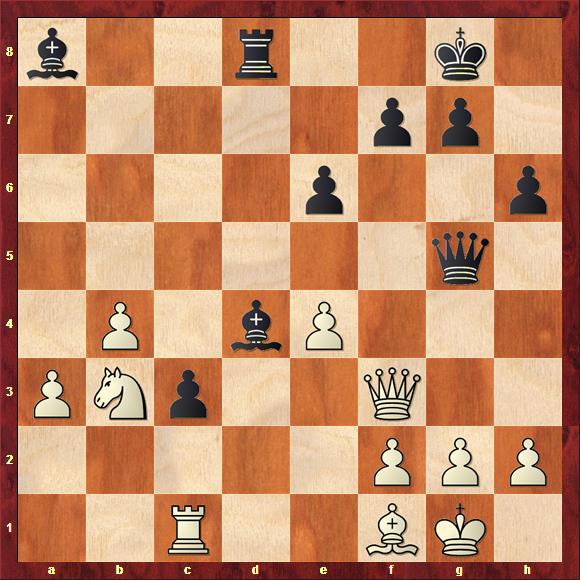
Black seems to be OK after something like 33. ... e5, cementing the bishop on d4. Instead I played 33. ... f5. I thought that this just won back my pawn, and I was actually thinking my position might be better. But my opponent calmly played 34. Qg3. I had missed that white is just back on top after 34. ... Bxe4 35. Qxg5 hxg5 36. Nxd4 Rxd4 37. Rxc3.
And still everything might have been fine. Skipping ahead to this position:
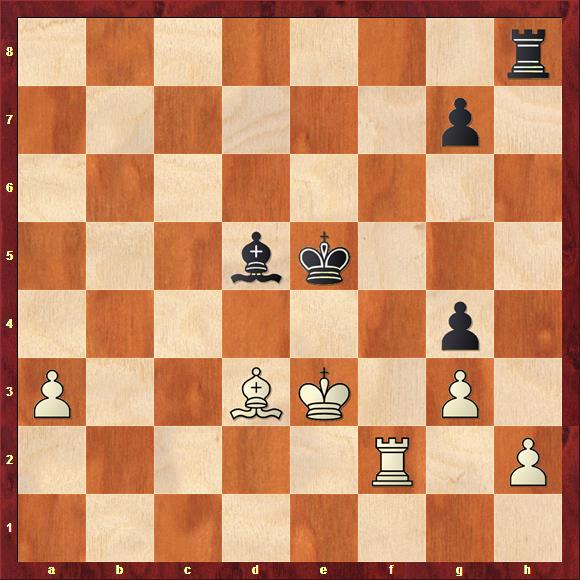
we find black about to play his fifty-third move. What to make of this position? White has his extra pawn, but h2 is a grotesque weakness. Can white win this? The computer, after several minutes of analysis, returns a verdict of slightly better for white, no more than that. However, this is precisely the sort of position where computer assessments need to be taken with a grain of salt. They have trouble with static endgames like this, where the position changes only very slowly.
I'm honestly unsure about the correct assessment here. But I am sure that my next move was just a blunder. I played 53. ... Ra8, and had to resign immediately after 54. Rf5+ After I move my king, white just takes the bishop on d5. When I take back with my king he plays the skewer with Be4+, picking off my rook in the corner. Game over.
Very frustrating. That's five hours of my life I won't get back. In addition to all my other inadequacies as a chess player, I have a real issue with confidence.
Clive Usiskin is another Princeton Chess Club alum. He was back for another year:
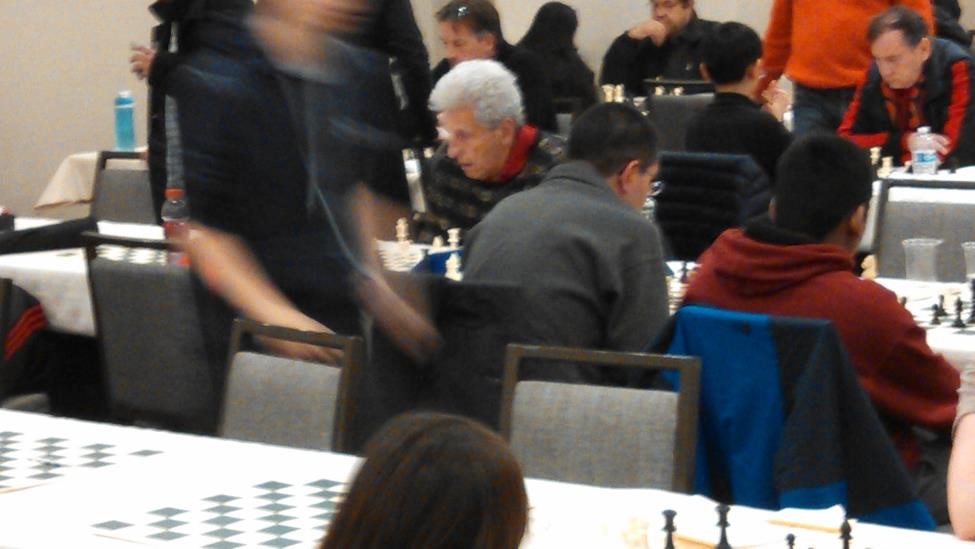
And here's Steve Doyle and Sophia Rohde, the two chief tournament directors.

Steve is a former editor of Chess Life magazine and a former President of the US Chess Federation. Also, he is a former member of the Princeton Chess Club. As a high school student, Steve was briefly my employer. He wrote a chess column for the Newark Star-Ledger newspaper. Part of the column was a tactical exercise. My job was to go pawing through chess books looking for suitable puzzles, and then to transfer them onto those old rub-off chess diagrams the kids today know nothing about. Of course, nowadays chess diagrams can be readily generated by a variety of software packages. Another instance of technology killing jobs!
Ned maintained our honor in the second round by managing a draw. Otherwise, though, we got skunked. Okay, so we were 0 and 2. Whatever. This tournament starts on Sunday!
Now, at this point I need to clarify something. At a big tournament like this, the boards are numbered. The top teams play on board one. The farther from board one you are, the more poorly you are doing in the tournament. To find out where you are playing, you consult the pairing sheets to learn which board you need to go to. And that is what we did on Sunday morning.
Folks, there's just no nice way to say this. We were on Board 137. Out of 138. Here's the room we were exiled to:
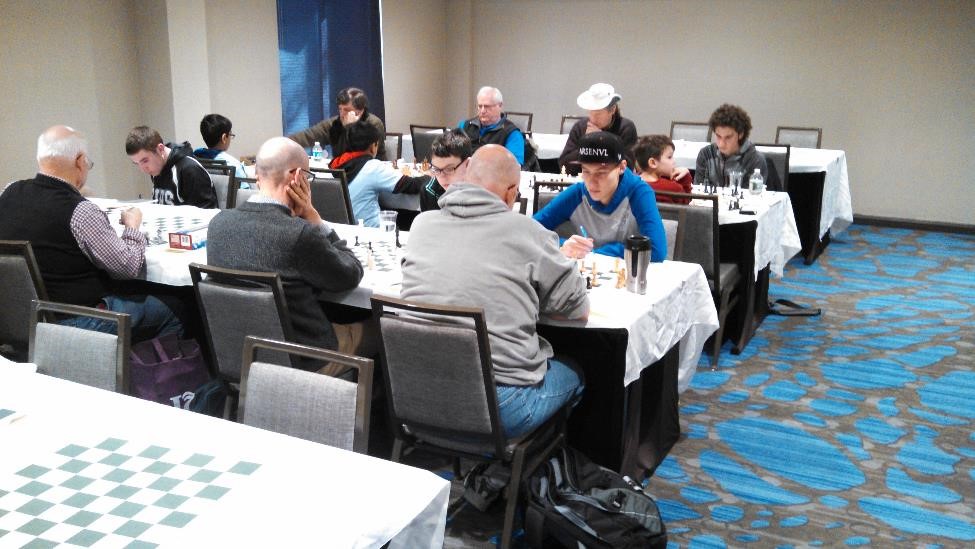
On the upside, we were paired way down in this round. Our opponents were sporting triple-digit ratings, which means they were almost complete beginners.
But you know what? No matter how low their ratings, you still have to sit at the board and take care of business. So here's what happened.
I had white. My opponent met my 1. e4 with the Sicilian Defense. Here's the position with black about to play his seventh move:
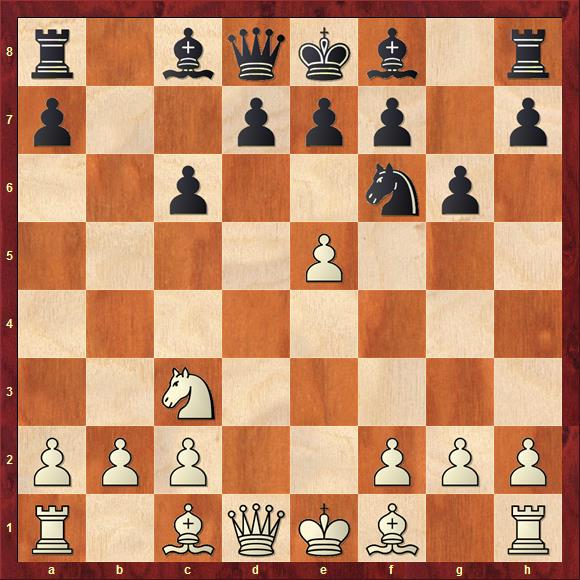
Black's knight is attacked. He would be just fine with the simple retreat 7. ... Ng8. The lost tempi would be compensated for by his strong center. Instead he played 7. ... Nd5 which just loses a pawn to 8. Nxd5 cxd5 9. Qxd5. I was feeling optimistic.
The next interesting moment came with white about to play his twelfth move.
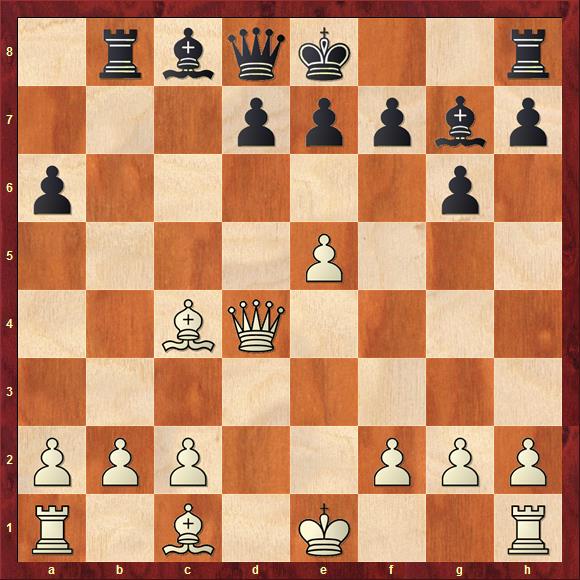
Here I noticed that I could play 12. Bxf7+. The point is that after, say, 12. ... Kxf7 13. e6+ Kg8 14. Qf4 I am going to pick off the rook on b8 after black deals with the mate threat on f7. Of course, 13. ... Kxe6 14. Qxg7 is scarcely an improvement.
I saw this, but decided against it. Even though I was confident it was winning, I didn't like neglecting my development and setting up my queen for discoveries on the eighth rank. I figured that a good way to lose to a lower-rated player is to play a forcing, sacrificial line that didn't quite work. And, again, I was confident that nothing fancy was going to be required here. So I simply castled.
Skipping ahead, we come to this:
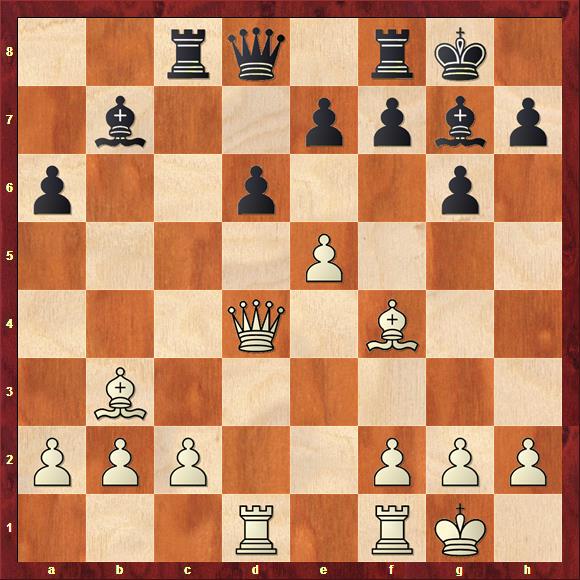
Black has just moved his pawn to d6. His idea was that I cannot take, since the e-pawn is pinned to my queen. But my opponent missed that his bishop is hanging. I played 16. Qb4. It was just carnage after 16. ... Qc7 17. exd6 Qc6 18. Bd5 Qxc2 19. Bxb7.
The party ended like this:
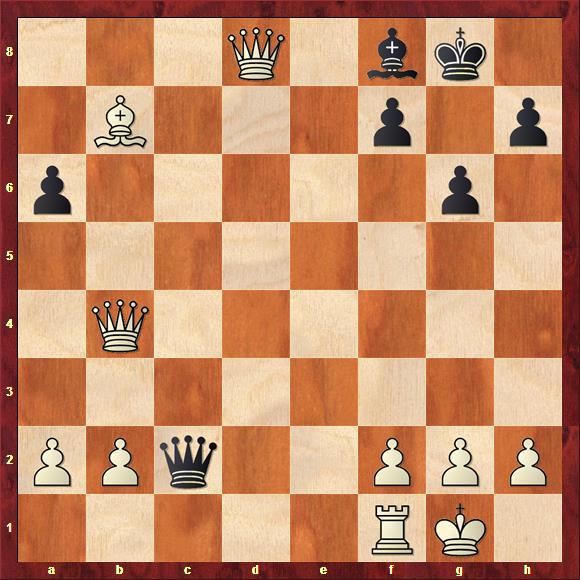
It's always nice to have to stipulate which queen you're using to give mate. I played 24. Qbxf8 mate. I regard this as better than using the other queen, since it sets up some trivial retro-analysis. From the final position you can see at once that white's last move involved capturing a piece on f8.
Having taken care of business, I glanced over to see how my homies were doing.

That's Doug playing white. His skillful play seems to have netted him a material advantage.
Sunday afternoon saw the return of another USATE tradition: Dinner at a local Chinese restaurant. And look who joined us:

The new guy is Bill MacNeal, well known around these parts for his frequent comments on my Sunday Chess Problem posts. Bill, of course, is another Princeton Chess Club alum.
This time we were on the right end of the skunking. We all won in round three. That brought us back to one of the nicer rooms, but we were still doing poorly enough to get paired down. Win-win!
My opponent was rated just a whisker under 1700. I was black. He entered into the Exchange Variation of the Ruy Lopez:
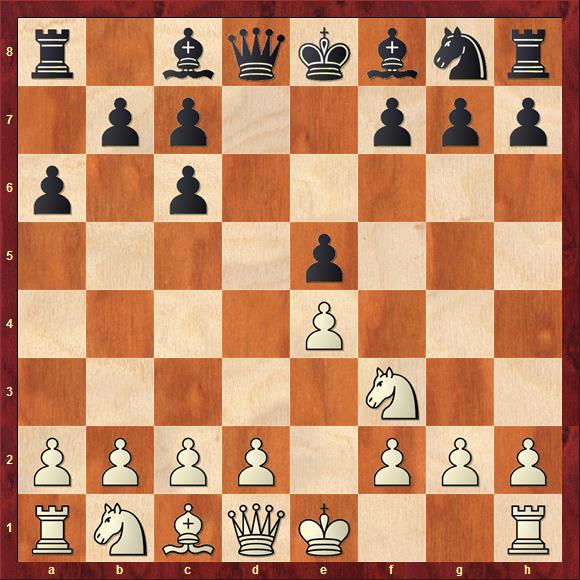
My heart sank when I saw this. The exchange variation is a rare visitor in master play. (Bobby Fischer won some big games on the white side of it, but he had superpowers so that doesn't count.) White's idea is that he compromises black's pawn structure but gives up the two bishops in doing so. The feeling is that black is OK here. The light-squared bishop is an important attacking piece for white in the Ruy Lopez!
The reason my heart sank, though, is that it is a good practical choice when you're giving up several hundred rating points to your opponent. Objectively it's not as testing for black as other lines of the Ruy, but it's also not the kind of opening where white is going to lose quickly. Black has to be very patient about building up counterplay.
We both patiently developed our pieces for a while. Here's the position with black about to play his sixteenth move:
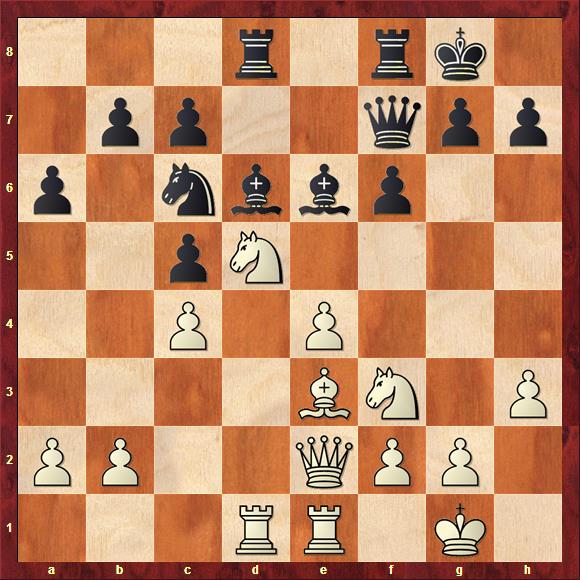
After pondering the position for several minutes I suddenly noticed that 16. ... Qg6 wins a pawn. White's e4 pawn is unprotected, and the h3 pawn is in danger to black's bishop, since the g-pawn is pinned by the queen. Still, there's a lot to calculate here. Losing the pawn is not the end of the world for white, since black's extra button is the doubled-up fellow on the c-file. Also, white's pieces will be reasonably active. Still, I felt like I had to mix up the position, so I went for it.
Play continued 16. ... Qg6 17. Bf4 Bxh3 18. Nh4 Qg4
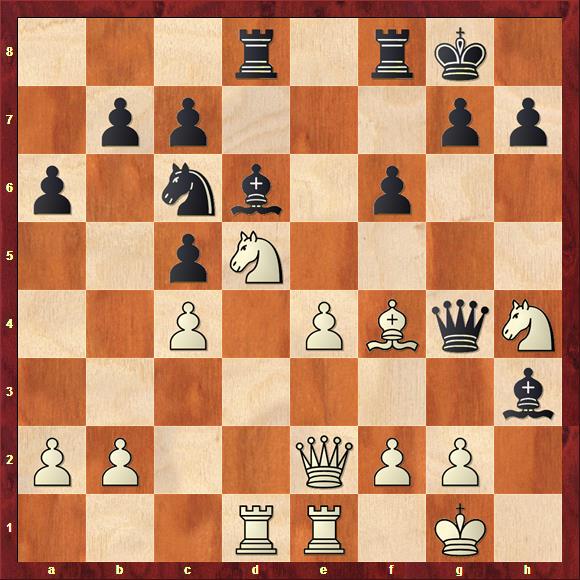
19. Bxd6 Rxd6 20. Qxg4 Bxg4 21. f3 Be6, leading to this position:
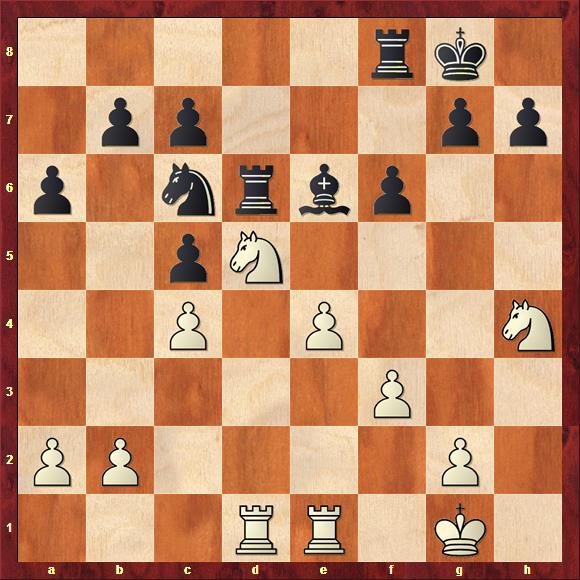
And now 22. Nxc7 Rxd1 23. Rxd1 Bxc4 24. b3 Bf7.
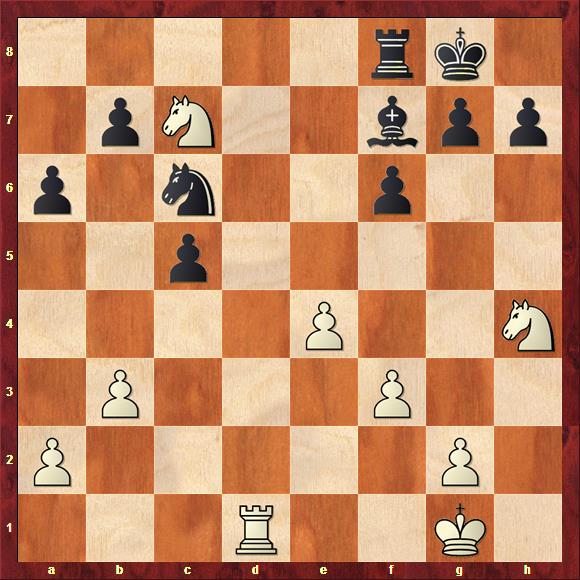
White's play has been somewhat dubious over the last few moves. I now have a healthy extra pawn on the c-file, and I have consolidated my position. Still, if white had played, say, 25. Nf5 here he would have remained very much in the game. He is still very active, meaning that care from black is required in exploiting his advantage.
Instead he played the seemingly reasonable 25. Rc1. Incredibly, this is a game-losing blunder. Now it's just black to play and win. And since I don't always miss tactics, I managed to find: 25. ... Rc8 26. Nd5 Bxd5 27. exd5 Nd4!
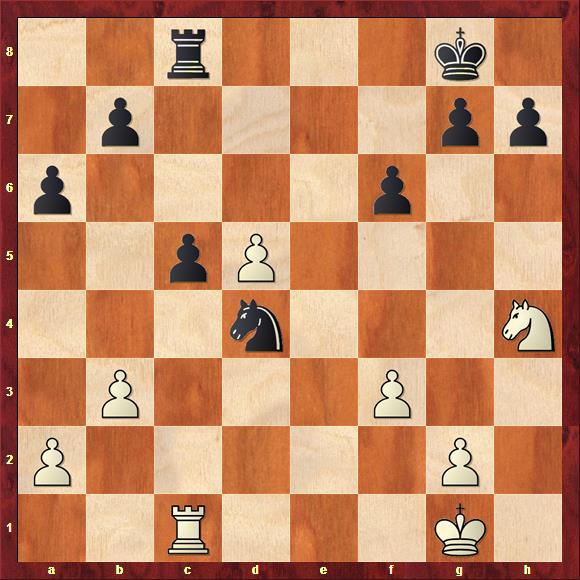
Splat! White is facing a lethal knight fork on e2. But the black knight also covers f5, which was the sole safe square for white's knight on h4. So after white deals with the fork (he played 28. Kf2), black shuts the door with 28. ... g5

So much for that. White resigned.
As it happens, that was my last game of the event. Round Five was my round off, and we decided to withdraw from the tournament before the final round six, since we wanted to get home ahead of the looming snow and freezing rain.
Look who else was there:

That's Princeton Chess Club alum Andy Mishra. I don't know what was going on in his game, but he doesn't look too happy. Or maybe he was just trying to keep his right eye from falling out of his head.
My homies still had to get up for the Monday morning round. I sauntered along fifteen minutes in to cheer them on. Our two straight wins on Sunday got us back into the main ballroom and paired way up. Poor Curt was facing an expert on Board One. But ratings aren't everything...
Curt was white. He played his favorite Colle System. Everything was normal for a while. Here's the position with black to play his thirteenth move.

Black broke with 13. ... e5 and Curt replied with 14. e4 dxe4 15. Bxe4 Nxe4 16. Rxe4 exd4 17. Bf4
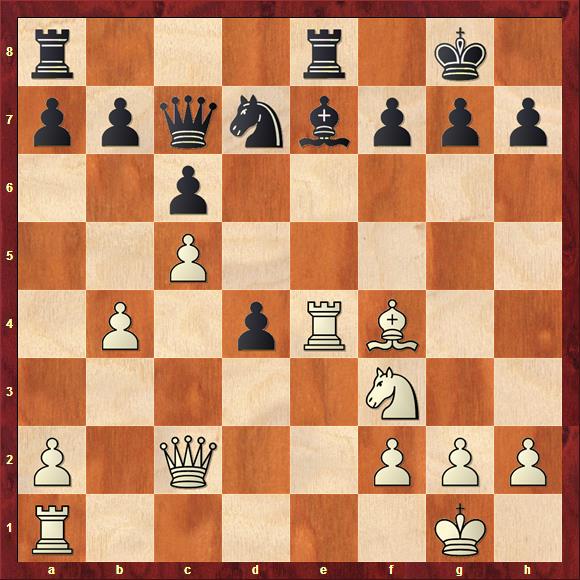
Here's one more for the chess is hard file. Black's queen is attacked and has only two possible squares. Should black move his queen to c8 or d8? One is fine, the other loses.
Black, no slouch as a chessplayer, played 17. ... Qc8. As the ancient knight said to Indiana Jones, “He chose...poorly.” Curt banged out 18. Rae1 which just picks off the bishop on e7. If black moves the bishop, then white will just take the rook on e8, winning queen for rook. If black moves his king to f8 to support the bishop, white just takes anyway. After Rxe7 Bd6, it's still big material gains for white.
And that's pretty much it! Curt finished up cleanly with 18. ... Nf6 19. Rxe7 Rxe7 20. Rxe7 Nd5:
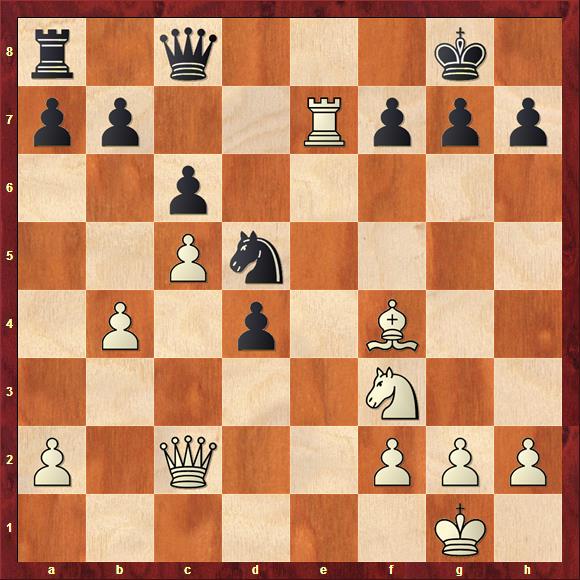
A seemingly strong fork, but it leads to naught. 21. Ng5 f5 22. Qc4 d3 23. Be5 d2 24. Rxg7+ Kf8 25. Qd3
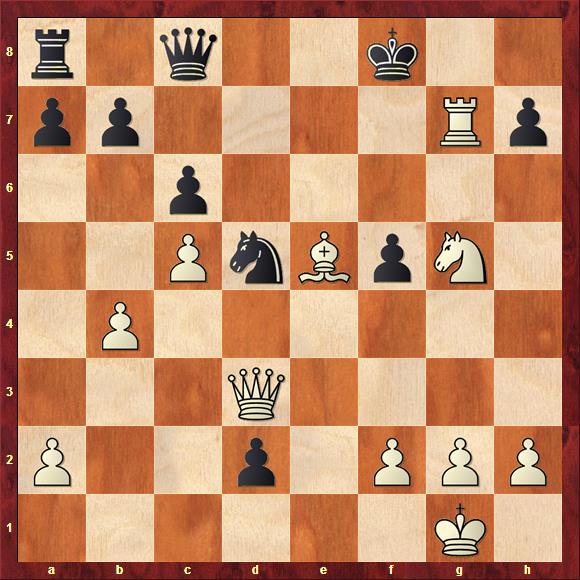
The d-pawn is going nowhere. The final moves were 25. ... d1Q 26. Qxd1 Qe8 27. Nxh7 mate. I managed to snap a picture as Curt delivered checkmate:
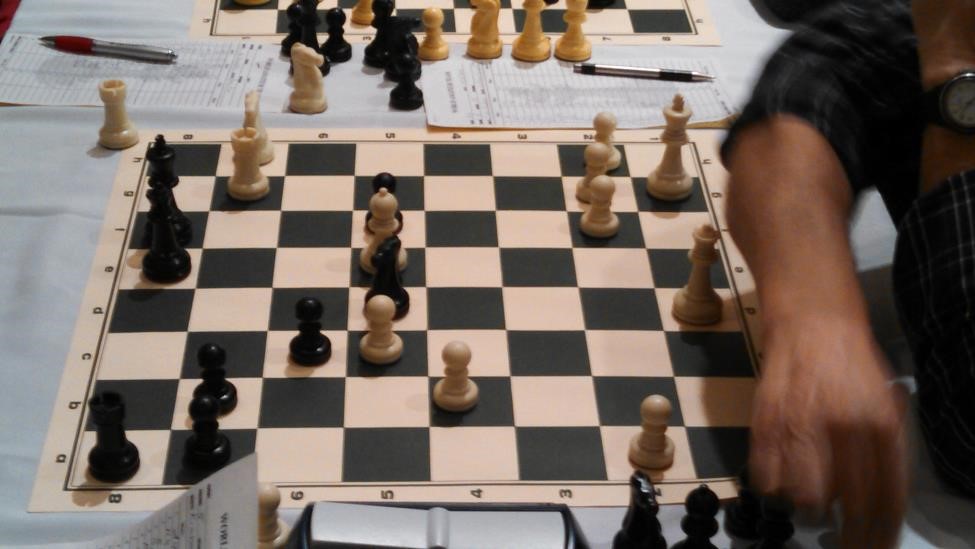
Very nice! It was a rough day at the office for the rest of my homies, but Curt upheld our honor.
And that was it! A splendid time as always, and I cannot wait to do it again next year. For all my hard work my rating went from 1960 all the way up to...1969. Expert is 2000. Here I come!

Thanks so much for this post, Jason! I'll be revisiting it more than once. For sure these games are reminders that you ALWAYS have to be alert for tactics, even in simple-looking positions. Easy to say, eh?
BTW Black's 21st move in the Kimbler game should be f5, not f6, which would allow a simple mate in 2.
Thanks again. Great seeing you guys!
Thanks for pointing out the typo, which I have now corrected. It was great seeing you as well!
Been going through Curt's game. Amazing how much different 17...Qd8 would have made the game. At first glance I thought White was still totally in control, but I was seeing mirages. I decided to put aside my normal horror of constructing the position and putting the game through its paces on a chess engine. Still lots of play, but it appears to be an even game. As it was, I am impressed with Curt's nice calm continuation of the attack with 21. Ng5 et al. Great job, Curt!
On a different topic (politics) you might get a kick out of the first 2 or 3 posts in another blog I frequent: http://www.nolandalla.com/
Obviously, he's a Bernie supporter. Still, I think you may enjoy his writing.
Looking again at your first game. Blunders are blunders, of course, but here I think it's interesting to consider WHY they were made. Looking at the first (16. Nxe5): of course any decent player is going to castigate himself for missing a pawn fork 2 moves in. So what's the reason 2 good players trip up? Habits. First, the habit of capturing with a piece rather than the pawn, looking to perhaps exchange pieces based on the time-worn principle that you are usually looking to reduce the number of pieces on the board when ahead in material. Now if it were only this habit, I don't think either player would have blundered. But in conjunction with habit #2 -- when you play a fianchetto opening you NEVER wish to part with your lovely Bishop -- and this is how you are thinking as Black in this position. And White, with yrs. of experience either playing fianchetto openings himself or playing against them, KNOWS that Black is thinking like this, so he doesn't consider the possibility of 16...Bxe5 either. I know this -- as Black, and as an habitual Sicilian Dragon player, I would have missed this every time, unless my opponent sagged back in his chair smacking himself in the head.
Now for the second one (20.Rfd1). Well, it's just the old chestnut of not moving the same piece -- here the Rook which has already moved to c1 -- twice in the opening (admittedly a stretch here since we are 20 moves in). Here I think it might be combined with a false sense of back-rank security due to the fact that when the Black Bishop exchanges on d4 it opens up the White King's escape square on h2. Although, as I say, this seems a bit of a stretch, don't you think if your Rook on c1 had still been standing on a1 you would have moved it to d1 to protect d4 without much reflection?
Just some thoughts. I would need a wheelbarrow to cart around all the 2-move misses I've made in my games on FICS over the years. Just yesterday I missed a blindingly obvious mate in one!